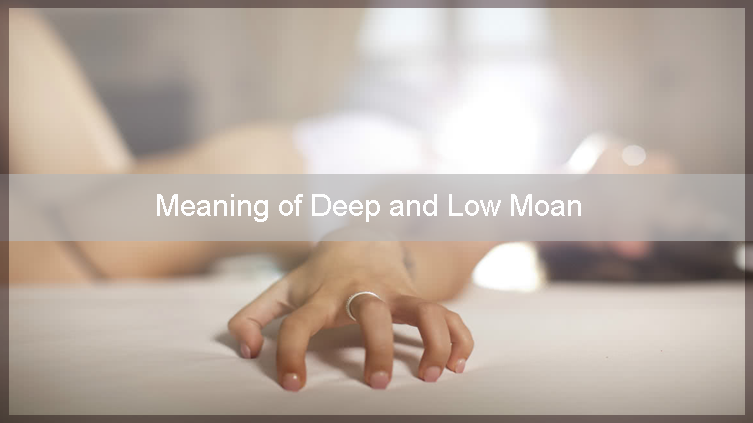
What is moan called? Meaning of Deep and Low Moan
What Is a Moan? Understanding the Meaning of Deep and Low Moans
Moaning is one of the most natural and instinctive ways the human body responds to physical and emotional stimulation, particularly during sexual activity. While often considered a private or intimate sound, moaning plays an important role in expressing pleasure, release, and connection.
In this article, we explore the definition of a moan, the different kinds of moans people make during intimacy, and what deep and low moans typically mean in a sexual context.
What Is a Moan?
A moan is a vocal sound, typically soft, prolonged, or expressive, that people make in response to heightened sensations. It often occurs during sexual arousal, foreplay, or orgasm. Moaning is involuntary in many cases and acts as a non-verbal communication of pleasure or satisfaction.
While moaning is most commonly associated with sexual pleasure, it can also arise from other intense physical or emotional experiences such as pain, longing, or even deep relaxation.
In different cultures and languages, moaning may be referred to in various ways. Common synonyms or related terms include:
-
Groan: A low, deep sound expressing physical or emotional intensity
-
Sigh: A soft, often breathy sound that conveys relief or desire
-
Purr: A sound that mimics contentment or pleasure
-
Whimper: A quiet, high-pitched moan often signaling vulnerability or sensitivity
-
Murmur: A gentle and continuous sound, sometimes intimate in tone
What Is a Low Moan?
A low moan typically refers to a soft, subtle, and breathy vocalization. It may be produced when someone is slowly building up arousal or experiencing a steady flow of pleasurable sensations.
Low moans can indicate:
-
Anticipation or the start of arousal
-
Gentle pleasure or emotional connection
-
A sense of vulnerability or sensuality
-
A controlled or quiet expression of desire
This kind of moaning is often more intimate and can be more emotionally charged, especially during slow or romantic moments.
What Is a Deep Moan?
A deep moan is usually a stronger, more guttural sound that emerges from the chest or throat. It’s associated with intense pleasure and often occurs during moments of high sexual tension or orgasm.
Deep moans may signal:
-
Physical release and climax
-
Intense pleasure or satisfaction
-
A loss of control in response to overwhelming stimulation
-
A raw, primal reaction to emotional or physical intimacy
These moans tend to be louder and more expressive, often shared spontaneously as a partner reaches their peak of arousal.
The Role of Moaning in Sexual Communication
Moaning isn’t just a sound—it’s a powerful form of communication between partners. It can serve as:
-
Feedback: Letting your partner know what feels good
-
Encouragement: Enhancing confidence and intimacy
-
Connection: Strengthening emotional closeness
-
Arousal: Enhancing the mood and experience for both partners
In many cases, moaning also helps individuals release tension and immerse themselves in the experience, making it both a physical and psychological expression.
Final Thoughts
Understanding the types of moans, deep or low, helps decode the emotional and physical states they reflect. Far from being just background noise, moaning is a natural, human way of expressing pleasure and vulnerability. Whether subtle or intense, it connects partners on a deeper level and contributes to a more fulfilling intimate experience.
At GetSetWild, we believe in open conversations around sexuality and intimacy. For more informative articles, sexual wellness products, and discreet delivery across India, explore our website and take your pleasure seriously.



